
Constanta-Mamaia: Romania's Coastal Gem
Constanta-Mamaia: A Harmonious Blend of Historic Charm and Modern Seaside Splendor on Romania's Black Sea Coast.
Constanta-Mamaia is a captivating destination on the Black Sea coast of Romania. This region seamlessly blends historic charm with modern allure, offering tourists a unique experience. Constanta, one of Romania's oldest cities, boasts rich history and cultural heritage. Visitors can explore ancient ruins, museums, and the stunning architecture of the old town. The Roman Mosaic Edifice and the Archaeology Museum are must-see spots for history enthusiasts. Just a short drive from Constanta is Mamaia, the most popular seaside resort in Romania. Known for its long sandy beaches and vibrant nightlife, Mamaia is perfect for those looking to relax by day and party by night. The resort features a variety of water sports, beach bars, and luxurious hotels. The Mamaia cable car offers breathtaking views of the coastline and is a fun way to see the resort from above. Both Constanta and Mamaia are renowned for their seafood cuisine. Fresh fish, shrimp, and other local delicacies are served in numerous seaside restaurants. The region is also famous for its festivals and events, making it a lively place to visit all year round. Whether you're interested in history, beach activities, or culinary delights, Constanta-Mamaia has something for everyone.
Local tips in Constanta-Mamaia
- Visit during late spring or early autumn to enjoy pleasant weather and avoid peak tourist season.
- Use the local public transport or rent a bike to explore the area conveniently and economically.
- Try the local seafood specialties at the beachside restaurants for an authentic culinary experience.
- Don't miss the Mamaia cable car ride for stunning panoramic views of the coastline.
- Carry cash as some smaller vendors and establishments might not accept cards.
Constanta-Mamaia: Romania's Coastal Gem
Constanta-Mamaia is a captivating destination on the Black Sea coast of Romania. This region seamlessly blends historic charm with modern allure, offering tourists a unique experience. Constanta, one of Romania's oldest cities, boasts rich history and cultural heritage. Visitors can explore ancient ruins, museums, and the stunning architecture of the old town. The Roman Mosaic Edifice and the Archaeology Museum are must-see spots for history enthusiasts. Just a short drive from Constanta is Mamaia, the most popular seaside resort in Romania. Known for its long sandy beaches and vibrant nightlife, Mamaia is perfect for those looking to relax by day and party by night. The resort features a variety of water sports, beach bars, and luxurious hotels. The Mamaia cable car offers breathtaking views of the coastline and is a fun way to see the resort from above. Both Constanta and Mamaia are renowned for their seafood cuisine. Fresh fish, shrimp, and other local delicacies are served in numerous seaside restaurants. The region is also famous for its festivals and events, making it a lively place to visit all year round. Whether you're interested in history, beach activities, or culinary delights, Constanta-Mamaia has something for everyone.
When is the best time to go to Constanta-Mamaia?
Iconic landmarks you can’t miss
The Dolphinarium of Constanța
Experience the magic of marine life at the Dolphinarium of Constanța, where enchanting dolphin shows and educational exhibits await every visitor.

The Touristic Port
Experience the charm of the Touristic Port of Constanța, where history, culture, and stunning maritime views come together for an unforgettable visit.
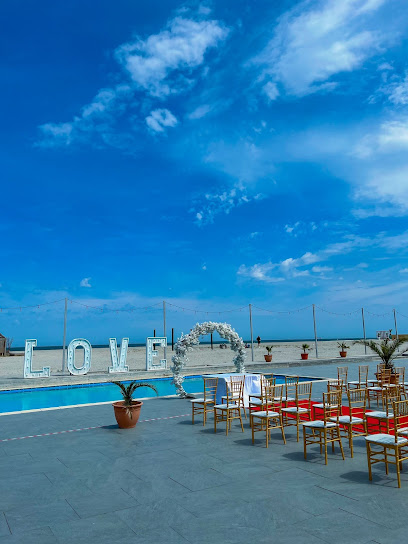
The Casino's Promenade
Discover the historic Casino's Promenade in Constanța, where stunning architecture meets vibrant coastal culture and breathtaking Black Sea views.

Luna Park
Discover the excitement of Luna Park, Constanța's premier amusement park, featuring thrilling rides, games, and family-friendly fun under the stars.

The Casino of Constanța
Explore the Casino of Constanța, a historic landmark on the Black Sea, showcasing stunning architecture and rich Romanian heritage.

Aqua Magic Mamaia
Experience the thrill of Aqua Magic Mamaia, Romania’s top water park, where fun meets relaxation in a sun-soaked paradise for all ages.
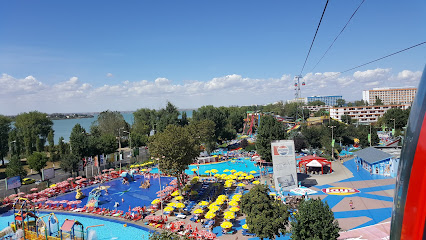
Barrels Pub
Discover the lively ambiance of Barrels Pub in Mamaia, where delicious food meets a vibrant drinking experience amid the beautiful Romanian coast.

Nikos Greek Taverna Cazino Mamaia
Experience the authentic taste of Greece at Nikos Greek Taverna in Mamaia, where delicious dishes and warm hospitality await you.

Cazino Mamaia
Discover Cazino Mamaia, a historical landmark by the Black Sea, blending stunning architecture with rich cultural heritage in Romania's premier seaside resort.

Exhibitions' Pavilion
Explore Constanța's Exhibitions' Pavilion for a rich cultural experience filled with art, events, and community engagement along the beautiful Mamaia Boulevard.

Sat Vacanta Mamaia
Experience the thrill and excitement of Sat Vacanta Mamaia, a vibrant fairground in Constanța, Romania, perfect for family fun and adventure.

Museum of National History and Archeology
Explore the Museum of National History and Archeology in Constanța and uncover Romania's rich cultural heritage through fascinating artifacts and exhibits.

Zenith Conference and Spa
Experience luxury and relaxation at Zenith Conference and Spa in Mamaia, Constanța, where stunning views and exquisite dining await you.

Terasa Andreea
Experience the best of Romanian and international cuisine at Terasa Andreea, located in the heart of Mamaia with stunning Black Sea views.

Princess Summer Club & Beach Mamaia
Discover the ultimate beach club experience at Princess Summer Club & Beach Mamaia, where vibrant nightlife meets stunning seaside views.
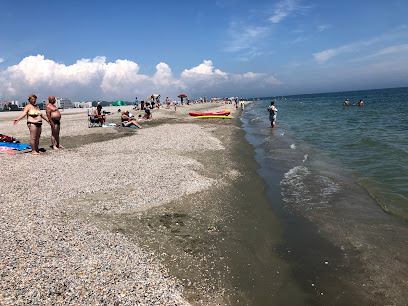
Unmissable attractions to see
The Dolphinarium of Constanța
Discover the magic of marine life at the Dolphinarium of Constanța, where dolphins dazzle and education meets entertainment in a stunning coastal setting.

Luna Park
Experience the joy and excitement of Luna Park, a premier amusement park in Constanța, Romania, perfect for families and thrill-seekers alike.

Aqua Magic Mamaia
Experience the ultimate thrill at Aqua Magic Mamaia, Romania's premier water park filled with excitement, adventure, and fun for all ages.

The Microreservation in Constanța
Experience the wonders of marine life and wildlife at The Microreservation in Constanța, a perfect family-friendly attraction in Romania.
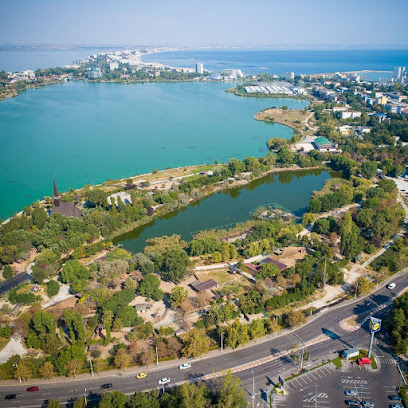
Pasarela Iaht Sat-Vacanța
Explore the vibrant ambiance of Pasarela Iaht Sat-Vacanța in Mamaia, where stunning views meet rich culture and exciting nightlife.

Plaja pupa
Discover the beauty of Plaja Pupa - a breathtaking beach destination in Mamaia, Romania, perfect for sun-seekers and adventure lovers alike.

La Butoaie
Experience the charm of La Butoaie in Constanța, a vibrant tourist attraction blending rich culture with stunning seaside views.

Piateta Perla
Discover the serene beauty of Piateta Perla in Mamaia, a perfect beachfront destination for relaxation and unforgettable experiences.

Queen Mary Castle
Experience the elegance of Queen Mary Castle, a historical landmark in Constanța, showcasing Romania's royal heritage amidst breathtaking landscapes.

Blanco Beach Butoaie
Discover the captivating beauty and vibrant atmosphere of Blanco Beach Butoaie in Mamaia, Romania's premier tourist destination.

VEGA BEACH
Experience the beauty and tranquility of Vega Beach, a premier destination on Romania's Black Sea coast, perfect for sun-seekers and adventure lovers alike.

Plajă Mediteraneean Mamaia
Explore Plajă Mediteraneean Mamaia: A stunning beach destination on Romania's Black Sea coast, perfect for relaxation and adventure.

The Quiet Place
Experience tranquility at The Quiet Place in Mamaia, Constanța—a serene retreat amidst nature's beauty.

Essential places to dine
Nikos Greek Taverna Cazino Mamaia
Savor the essence of Greece at Nikos Greek Taverna Cazino Mamaia—where every dish tells a story.

Terasa Andreea
Experience exceptional local flavors at Terasa Andreea in Mamaia, Constanța – where culinary delight meets stunning coastal views.

Sabroso Mamaia Rex
Experience exquisite Mediterranean cuisine with breathtaking views at Sabroso Mamaia Rex - a culinary delight on Romania's stunning Black Sea coast.

Restaurant On Plonge Jr.
Experience exquisite Romanian cuisine at Restaurant On Plonge Jr., located on Mamaia Boulevard in Constanța's vibrant seaside atmosphere.

Blue Acqua Restaurant - Faleza Mamaia
Experience exquisite dining at Blue Acqua Restaurant on Faleza Mamaia - where exceptional cuisine meets stunning seaside views.

IpaNera Restaurant, Cocktail bar & Beach
Experience exquisite cuisine and breathtaking seaside views at IpaNera Restaurant in Mamaia - your perfect beachside dining destination.
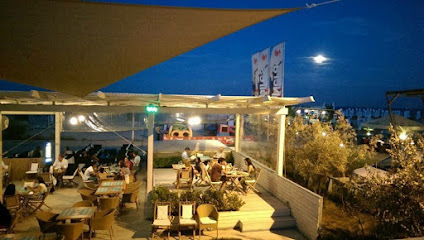
Terasa Motor
Experience exquisite dining at Terasa Motor in Constanța – where delectable Romanian cuisine meets stunning seaside views.
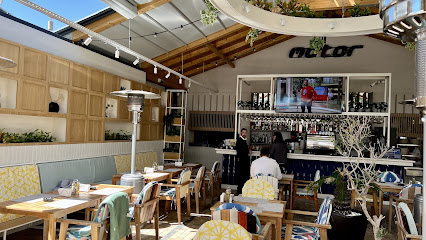
Restaurant Dorna
Experience exquisite Romanian cuisine at Restaurant Dorna on Mamaia Boulevard - where tradition meets modernity by the sea.
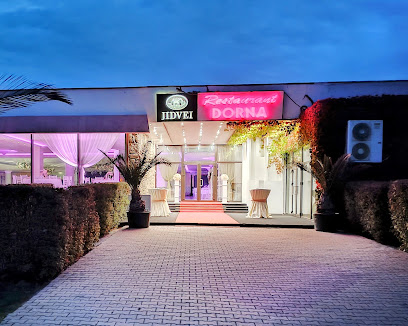
Restaurant Don Corleone
Experience exquisite dining at Restaurant Don Corleone in Constanța—where authentic flavors meet exceptional service along Bulevardul Mamaia.

Blue Acqua Restaurant - Mamaia Lac
Experience exquisite dining at Blue Acqua Restaurant by Mamaia Lac - where fresh flavors meet stunning views.

Crazy Beach
Discover delightful flavors at Crazy Beach in Mamaia - where exquisite cuisine meets breathtaking views of the Black Sea.

Harlequin
Experience the best of Romanian cuisine at Harlequin in Mamaia - where every meal is a celebration of flavor and hospitality.

Azur
Experience authentic Romanian flavors at Azur, where fresh seafood meets stunning coastal views in Mamaia.

Breeze Beach - Lebanese Restaurant
Discover the rich flavors of Lebanon at Breeze Beach Restaurant in Constanța - where exquisite cuisine meets stunning seaside views.

Diplomatic Mamaia
Indulge in exquisite cuisine at Diplomatic Mamaia - where culinary artistry meets breathtaking seaside views.

Markets, malls and hidden boutiques
Celsius Beach
Discover the thrill of outdoor sports and the charm of sun-soaked relaxation at Celsius Beach in Mamaia.
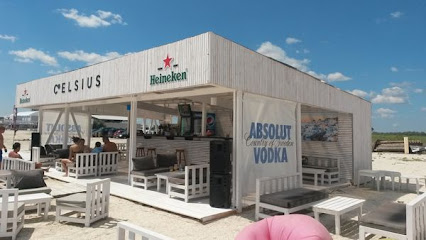
Mussa Fashion
Explore Mussa Fashion in Năvodari for the latest in women's fashion, offering stylish apparel and accessories in a vibrant shopping atmosphere.

KiKo Kid
Explore KiKo Kid, a magical toy store in Mamaia, Constanța, filled with delightful toys and games for children of all ages.

Boutique 17 - Perla
Discover unique fashion treasures at Boutique 17 - Perla in Constanța's vibrant Mamaia district, perfect for stylish tourists.

Summerland - Magazin de Suveniruri, Jucarii, Articole
Explore Summerland, the ultimate boutique for unique souvenirs and toys in Mamaia-Sat, capturing the heart of Romanian culture.

Turkish Ice Cream Mamaia
Experience the unique taste of organic Turkish ice cream at Mamaia, a delightful treat by the beach in Constanța.

Outlet Italia
Discover stylish footwear at Outlet Italia in Constanța, where quality meets affordability in a delightful shopping experience.

TERMINAL OF FASHION
Discover the ultimate beach clothing store in Constanța's Mamaia district, offering trendy swimwear and stylish beach accessories for your seaside getaway.

Magazin Cori Crist
Explore the eclectic offerings of Magazin Cori Crist, a vibrant shopping destination in Constanța showcasing local crafts and culinary delights.
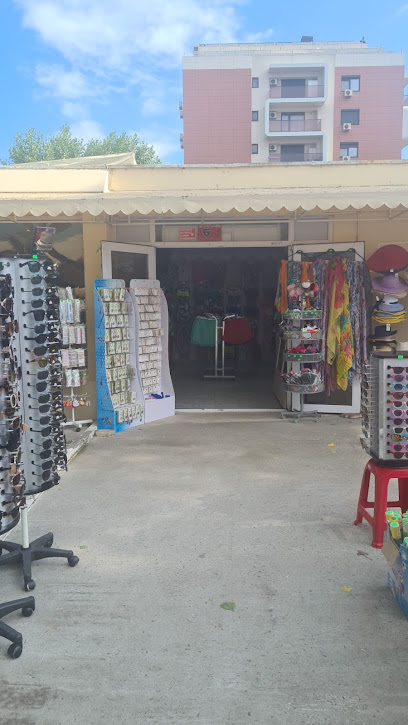
Happy colors
Discover the vibrant shopping experience at Happy Colors in Mamaia-Sat, where colorful ambiance meets diverse shopping and dining.

Minimarket Doruleț
Explore the boutique charm of Minimarket Doruleț in Mamaia, where local treasures and unique souvenirs await every traveler.

Liquor Store & More
Discover the essence of Romanian beverages at Liquor Store & More in Mamaia, where vibrant culture meets exceptional service.

Fashion Way Beachwear
Discover stylish beachwear at Fashion Way Beachwear in Constanța, the go-to spot for trendy swimwear and accessories near Mamaia's stunning coastline.

Magazin Alimentar Summerland
Experience the best of local and international flavors at Magazin Alimentar Summerland, a must-visit magazine store in Constanța.

Magazin Head Tenis Constanta
Explore your passion for tennis at Magazin Head Tenis Constanța - your go-to store for all tennis needs in the heart of Mamaia.

Essential bars & hidden hideouts
Barrels Pub
Discover the lively ambiance and diverse drink selection at Barrels Pub, a must-visit destination in Constanța's vibrant nightlife scene.

Princess Summer Club & Beach Mamaia
Discover the ultimate beachside escape at Princess Summer Club & Beach Mamaia, where relaxation meets vibrant nightlife in a stunning coastal setting.

IpaNera Restaurant, Cocktail bar & Beach
Discover the coastal charm of IpaNera Restaurant, where delicious cuisine meets stunning beachside views in Constanța.

The Couch Bistro Pub
Discover the charm of The Couch Bistro Pub in Constanța, where delicious food, refreshing drinks, and vibrant hookah await every visitor.

Fratelli Beach & Ristorante
Experience the perfect blend of exquisite dining and vibrant nightlife at Fratelli Beach & Ristorante in Mamaia-Sat.

Crazy Beach
Experience the vibrant culinary scene at Crazy Beach, where delicious local dishes meet stunning seaside views in Constanța.

La Nueva Cucaracha
Discover the lively La Nueva Cucaracha in Constanța, where delicious dining meets vibrant nightlife in a stunning coastal atmosphere.

Crema Beach Mamaia
Experience the perfect blend of relaxation and excitement at Crema Beach Mamaia, a vibrant bar on the stunning Black Sea coastline.
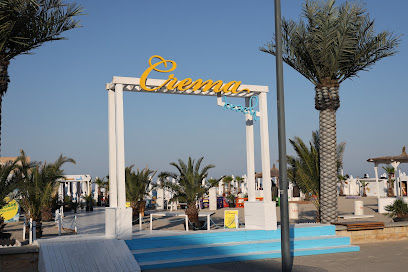
Barrels corner
Experience the perfect blend of relaxation and local charm at Barrels Corner, a must-visit lounge in Constanța's vibrant Mamaia district.

Cotton Beach Mamaia
Experience the vibrant beach bar culture at Cotton Beach Mamaia, where refreshing cocktails meet stunning Black Sea views.

G Room Club
Experience the vibrant nightlife at G Room Club in Constanța, where great music and a lively atmosphere await.
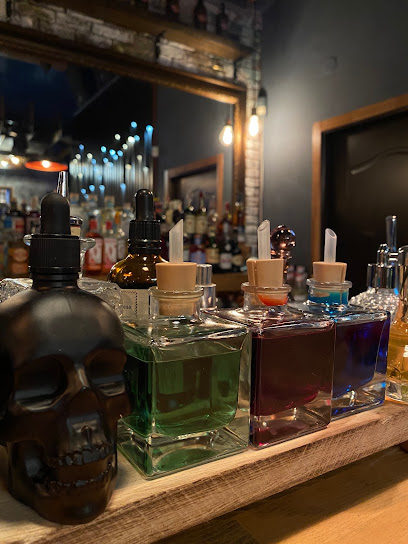
Iaki Beach Bar
Experience the vibrant atmosphere and stunning views at Iaki Beach Bar in Mamaia, a perfect retreat for beach lovers and cocktail enthusiasts.

Sunshine Beach
Experience the perfect blend of relaxation and fun at Sunshine Beach, the ultimate bar destination in Constanța, Romania.

Beach Bar H2O
Experience the vibrant atmosphere and stunning views at Beach Bar H2O in Mamaia, where sun, sea, and socializing come together.

The BEACH BAR
Discover the ultimate beachside experience at The Beach Bar in Mamaia, where refreshing cocktails and stunning views await every visitor.

Local Phrases about Constanta-Mamaia
-
- HelloSalut
[sah-LOOT] - GoodbyeLa revedere
[lah reh-veh-DEH-reh] - YesDa
[dah] - NoNu
[noo] - Please/You're welcomeTe rog
[teh rohg] - Thank youMulțumesc
[mool-tsoo-MESK] - Excuse me/SorryScuzați-mă
[skoo-ZA-tsi muh] - How are you?Ce faci?
[cheh FAHCH] - Fine. And you?Bine. Și tu?
[BEE-neh. shee too] - Do you speak English?Vorbiți engleză?
[vor-BEE-ts ee-NGLEH-zuh] - I don't understandNu înțeleg
[noo uhn-TSEH-leg]
- HelloSalut
-
- I'd like to see the menu, pleaseAș dori să văd meniul, vă rog
[ush DOH-ree suh vuhd meh-NYOOHL, vuh rohg] - I don't eat meatNu mănânc carne
[noo muh-NUHNC KAR-neh] - Cheers!Noroc!
[noh-ROHK] - I would like to pay, pleaseAș dori să plătesc, vă rog
[ush DOH-ree suh PLUH-tesk, vuh rohg]
- I'd like to see the menu, pleaseAș dori să văd meniul, vă rog
-
- Help!Ajutor!
[ah-ZHOO-tor] - Go away!Du-te!
[doo-teh] - Call the Police!Suniți Poliția!
[SOO-neets po-LEET-syah] - Call a doctor!Suniți un doctor!
[SOO-neets oon dohk-TOHR] - I'm lostM-am pierdut
[mahm pyehr-DOOT] - I'm illSunt bolnav
[soont bohl-NAV]
- Help!Ajutor!
-
- I'd like to buy...Aș dori să cumpăr...
[ush DOH-ree suh KOOM-puhr] - I'm just lookingDoar mă uit
[doh-ahr muh OOH-eet] - How much is it?Cât costă?
[kaht KOS-tuh] - That's too expensiveEste prea scump
[ehs-teh preh-ah skoomp] - Can you lower the price?Puteți să scădeți prețul?
[poo-TEHT suh SKUH-dehts prehts-ool]
- I'd like to buy...Aș dori să cumpăr...
-
- What time is it?Cât e ceasul?
[kaht eh CHEH-ah-sool] - It's one o'clockEste ora unu
[ehs-teh OH-rah OON-oo] - Half past (10)Jumătate (zece)
[zhoo-MAH-tah-teh (ZEH-cheh)] - MorningDimineața
[dee-mee-NUTS-ah] - AfternoonDupă-amiază
[doo-PAH ah-MYAH-zuh] - EveningSeara
[seh-AH-rah] - YesterdayIeri
[YEH-ree] - TodayAstăzi
[ahs-TUHZ] - TomorrowMâine
[MUH-een-eh] - 1Unu
[OO-noo] - 2Doi
[doy] - 3Trei
[treh-ee] - 4Patru
[PAH-troo] - 5Cinci
[CHEEN-chee] - 6Șase
[SHAH-seh] - 7Șapte
[SHAHP-teh] - 8Opt
[ohpt] - 9Nouă
[noo-uh] - 10Zece
[ZEH-cheh]
- What time is it?Cât e ceasul?
-
- Where's a/the...?Unde este unul/o...
[OON-deh ehs-teh OON-ool/oh] - What's the address?Care este adresa?
[KA-reh ehs-teh ah-DREH-sah] - Can you show me (on the map)?Puteți să-mi arătați (pe hartă)?
[poo-TEHT suh-mee ah-RAH-tsuhts (peh HAHR-tuh)] - When's the next (bus)?Când vine următorul (autobuz)?
[kaund VEE-neh oor-MAH-toh-rool (ow-TOH-booz)] - A ticket (to ....)Un bilet (spre ....)
[oon bee-LET (spreh)]
- Where's a/the...?Unde este unul/o...
History of Constanta-Mamaia
-
Constanta, originally known as Tomis, was founded around the 6th century BC by Greek colonists from Miletus. The city was strategically located on the western coast of the Black Sea, which facilitated its development into a significant trading hub. Tomis is also famously known as the place of exile for the Roman poet Ovid, who was banished by Emperor Augustus in 8 AD. Ovid's writings during his exile paint a vivid picture of the ancient city and its surroundings, offering valuable insights into its early history.
-
During the Roman era, Tomis became an important part of the Roman province of Moesia Inferior. The city flourished as a bustling port, benefiting from the Pax Romana which ensured safety and stability across the empire. Roman influence is evident in the city's architecture, with remnants of Roman baths, mosaics, and other structures that can still be seen today. The importance of Tomis during the Roman period is highlighted by its mention in several ancient texts and maps.
-
After the fall of the Western Roman Empire, Tomis came under Byzantine control. The city continued to thrive as a key maritime and trade center. During the Middle Ages, Constanta (the name derived from 'Constantiana', in honor of Emperor Constantine the Great) faced numerous invasions and changes in control, including periods under Bulgarian and Ottoman rule. Each of these epochs left its mark on the city's culture, architecture, and demographic composition.
-
Constanta was under Ottoman control from the late 15th century until the late 19th century. During this period, the city was known as Köstence. The Ottomans fortified Constanta with impressive walls and watchtowers, transforming it into a defensive stronghold. The cultural and architectural influence of the Ottoman era is still visible in some of the city's historical mosques and buildings.
-
Constanta was liberated from Ottoman rule during the Russo-Turkish War (1877–1878) and subsequently became part of the Kingdom of Romania. The late 19th and early 20th centuries saw significant development and modernization efforts. The construction of the Constanta Casino, an iconic Art Nouveau building inaugurated in 1910, marked the city's transformation into a popular seaside resort. The interwar period was a time of prosperity for Constanta, which continued to grow in both population and economic importance.
-
Mamaia, a district of Constanta, emerged as a premier resort destination in the early 20th century. Located on a narrow strip of land between the Black Sea and Lake Siutghiol, Mamaia is renowned for its long sandy beaches and vibrant nightlife. Significant investments in tourism infrastructure during the communist era further boosted Mamaia's popularity, making it one of the most visited seaside resorts in Romania. Today, Mamaia continues to attract tourists from around the world, offering a mix of luxury hotels, entertainment options, and natural beauty.
-
Constanta boasts a rich cultural heritage, with numerous museums, historical landmarks, and cultural institutions. The city's Archaeological Museum showcases artifacts from its Greek, Roman, and Byzantine past, while the Roman Mosaic Edifice is a testament to the city's ancient prosperity. Modern attractions include the Dolphinarium, the Planetarium, and the Aquarium, providing educational and recreational experiences for visitors. Festivals and events, such as the Constanta International Film Festival and the Mamaia Music Festival, celebrate the city's vibrant cultural scene.
Constanta-Mamaia Essentials
-
Constanta-Mamaia is easily accessible by air, road, and rail. The nearest airport is Mihail Kogălniceanu International Airport, located approximately 25 kilometers from Constanta. From the airport, you can take a taxi or use the shuttle services to reach Constanta-Mamaia. Alternatively, you can fly into Bucharest Henri Coandă International Airport and take a train or bus to Constanta, which is about a 2.5-hour journey. Trains from Bucharest to Constanta are frequent and offer a scenic route along the Black Sea coast.
-
Once in Constanta-Mamaia, you have several transportation options. The local bus network is extensive and connects all major areas. Taxis are readily available and relatively affordable; make sure the meter is running to avoid overcharging. For a more flexible option, consider renting a car. Bicycles and electric scooters are also popular for navigating the beach areas. During the summer season, there are also shuttle buses operating between Constanta and Mamaia.
-
The official currency in Romania is the Romanian Leu (RON). Credit and debit cards are widely accepted in hotels, restaurants, and larger shops. However, it’s advisable to carry some cash for smaller establishments and markets. ATMs are plentiful, especially in tourist areas, so withdrawing money is convenient. Currency exchange services are available at banks and exchange offices, but it's wise to compare rates.
-
Constanta-Mamaia is generally safe for tourists, but like any destination, it's important to stay vigilant. Avoid displaying valuables and be cautious in crowded places to prevent pickpocketing. Areas to be cautious in include the main train station and some of the less populated beach areas at night. Stick to well-lit and busy streets after dark, and use registered taxis or ride-sharing services.
-
In case of emergency, dial 112 for immediate assistance. This number connects you to emergency services including police, fire, and medical help. The main hospital in Constanta is the County Clinical Emergency Hospital, which offers comprehensive medical services. Pharmacies (Farmacie) are widely available for minor health issues. It’s recommended to have travel insurance that covers medical emergencies.
-
Fashion: Do dress comfortably, especially in the beach area, but avoid overly revealing clothing in city areas and religious sites. Religion: Do respect local customs and religious practices. Cover your head and shoulders when entering churches. Public Transport: Do use the designated payment methods and validate your ticket. Don't occupy seats reserved for the elderly or disabled. Greetings: Do greet people with a handshake and a friendly smile. It's polite to use titles such as Mr. or Mrs. Eating & Drinking: Do try local dishes and accept food and drink offerings. Don't refuse hospitality, as it might be considered impolite.
-
To experience Constanta-Mamaia like a local, visit the traditional markets such as the Fish Market in Constanta for fresh seafood. Explore the historic Old Town of Constanta to discover hidden gems like antique shops and local cafes. Don't miss the local festivals and events, especially during the summer season. For a quieter beach experience, head to the northern part of Mamaia, which is less crowded. Engage with locals, who are generally friendly and eager to share stories about their city.
Trending Landmarks in Constanta-Mamaia
-
The Dolphinarium of Constanța
-
The Touristic Port
-
The Casino's Promenade
-
Luna Park
-
The Casino of Constanța
-
Aqua Magic Mamaia
-
Barrels Pub
-
Nikos Greek Taverna Cazino Mamaia
-
Cazino Mamaia
-
Exhibitions' Pavilion
-
Sat Vacanta Mamaia
-
Museum of National History and Archeology
-
Zenith Conference and Spa
-
Terasa Andreea
-
Princess Summer Club & Beach Mamaia
Nearby Cities to Constanta-Mamaia
-
Things To Do in Varna
-
Things To Do in Shumen
-
Things To Do in Focsani
-
Things To Do in Bucharest
-
Things To Do in Burgas
-
Things To Do in Ruse
-
Things To Do in Brasov
-
Things To Do in Tiraspol
-
Things To Do in Pitesti
-
Things To Do in Chișinău
-
Things To Do in Gabrovo
-
Things To Do in Stara Zagora
-
Things To Do in Iasi
-
Things To Do in Pleven
-
Things To Do in Orhei











